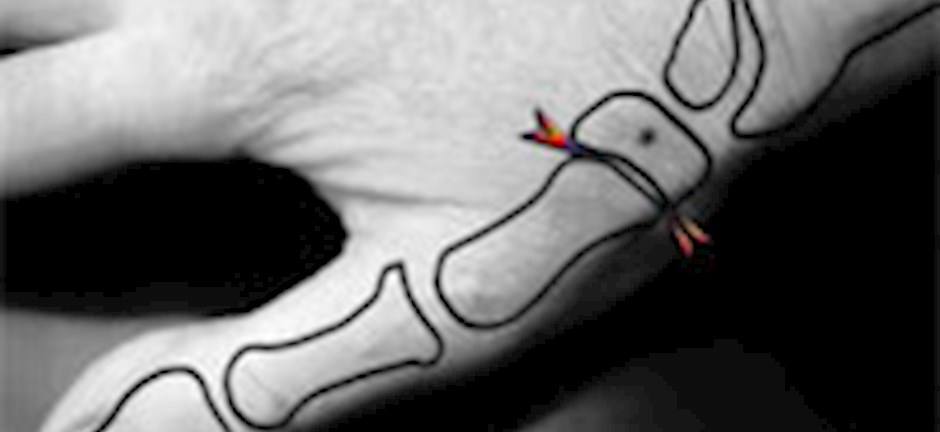
What is the trapezium?
The trapezium is a small bone that sits at the bottom of the thumb and is important in its stability.
What has happened?
Arthritis has developed around the bone: The protective cartilage has worn away and there is inflammation in the joint. The condition is more common in women over the age of 40.
What are the symptoms?
The most common symptom is pain around the base of the thumb especially when performing certain activities such as lifting heavy pots or kettles, pinching (e.g. using a key), opening jars and wringing out cloths. The thumb may also feel weak. You may also notice a change in the shape at the base of the thumb.
What are the non-surgical treatments?
The symptoms can often be controlled with thumb splints and painkillers. The next step is often a steroid injection into the joint. The arthritis itself can go through periods of improvement and deterioration. If these options are no longer working, surgery is considered.
How is the operation performed?
The choice of anesthetic will be discussed by the anesthetist, but may be a general anesthetic, where you are asleep, or a nerve block where your arm is numb, supplemented with sedation if required.
The procedure involves removing the whole trapezium bone, through a small incision at the bottom of the thumb, which removes the painful areas of bone contact and friction.
Sometimes a wire is inserted to support the thumb. It would be removed at 4 weeks in clinic. If no wire is used, a plaster is applied.
You may need to stay in hospital overnight.
What should I expect about my recovery?
While in the initial bandage or cast, you will have limited use of your hand. When you are seen at the clinic approximately two weeks after the operation, your wound will be cleaned and any visible stitches removed. There may be bruising and swelling. At that point a splint or further cast will be made or applied by the hand therapist. It should be worn for a further two to four weeks.
The hand therapist will give you advice regarding exercises to aid recovery.
It is quite normal to lose strength in the thumb and it can take up to a full year to gain maximum improvement.
What are the risks?
- Infection – risk is low and responds well to antibiotics.
- Pain – The thumb may remain uncomfortable for up to six months, by which time the scar within the joint is beginning to settle.
- Stiffness – approximately 5% of patients may have problems with increased stiffness and pain in their hand. This is not possible to predict but is treated with physiotherapy and painkillers.
- Weakness – as discussed this is part of the recovery but it will eventually recover beyond its preoperative strength, but never to the degree it was prior to developing arthritis.
- Nerve injury – Localised numbness around the wound and over the thumb may occur, which usually resolves with time.
- Occasionally a tender area (neuroma) can occur over the wound. Very occasionally this may require further surgery.
- Shortening – As the bone has been removed, the thumb may shorten which occasionally may reduce your hand span.
When can I return to driving and work?
Usually after 6 weeks, but the final decision must be made on an individual basis.
Patient Information Leaflet
Find A Surgeon
Find a surgeon in your area.
Consent Form
You can access the consent form using the button below.




